8 Ways to Create Share-Worthy Content

Social-SEO (the idea that social signals help improve a company's placement on the search engines) is an idea that is gaining speed. Many believe that Likes, Shares, Comments, +1s, Retweets, etc. lead to higher Web rankings.
As for what degree of truth there is in social-SEO, people (the ones behind the search engines and those who practice SEO or provide services for it) disagree. Regardless, the fact is, providing quality, shareable content is good for users and that is (hands down) good for SEO and social media efforts. Here are eight ways to create share-worthy content.
1. Be On Trend
Hashtagify.me is a free, advanced hashtag search, which helps social media marketers or search engine optimization professionals find the best hashtags to reach their audiences. For writers, it can help them tailor content to what is trending. For example, Website Magazine may want to craft their next ecommerce post (see image below) on Magento, since it is one of the top 10 hashtags related to #ecommerce. It is also the most specific out of the bunch. Additionally, since Web success is a holistic process - where departments and people within organizations should be working together - being "on trend" can help content producers, social media marketers and search engine optimization pros all move toward the same goal of increasing visibility for content, on social media networks and on the search engines.
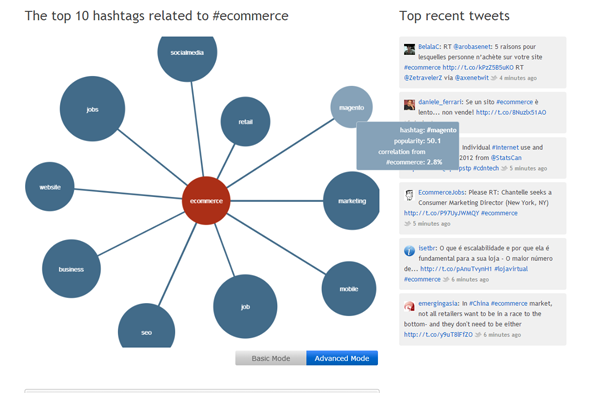
Other tools to consider: Brandwatch, Bottlenose, BrightEdge
2. Include Pictures
On average, articles that include relevant pictures or infographics produce 94 percent more total views than those without (see image).
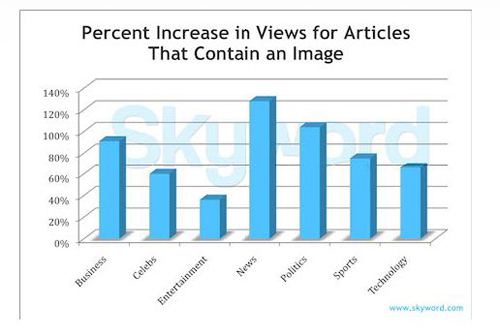
This finding is tough to ignore, but not all companies have dedicated designers to create images, let alone infographics. There are many stock photography services (Shutterstock, iStock, Corbis Images, etc.) that provide images and vectors. Subscriptions to these services - or paying for individual photos - can be pricey for resource-strapped businesses, but can be worth it. It would also be beneficial to create an account with iStock and taking advantage of its "Free Photo of the Week" promotion (see image below) and build an image library.

Some website builders also include free stock photos - like 1&1.
That said, audiences can quickly become tired of stock images - if the same ones are used repeatedly on a single site or by other websites in the same industry. It's good to create a mix of stock photos and unique images. Website Magazine Associate Editor Allison Howen put together an "Image Toolbox" back in March, which includes some suggestions for Web-based image editors to do simple photo retouching as well as add features into images, such as text, arrows and icons that can be used to create memes, as well as other special effects that can help images stand out.
Other tools to consider: Flickr (but double check the photos are OK'd for commercial use), stock.xchng
3. Create a Great Headline
Headlines are typically all that a reader views. In fact, Copyblogger reports that on average, 8 out of 10 people will read headline copy, but only 2 out of 10 will read the rest.
Above all, a headline needs to be clear and compelling. Accuracy (what the article will actually include) should always outweigh cleverness. With that in mind, Portent has a pretty cool "Content Idea Generator" that can help writers come up with wittier titles to make articles more share-worthy. Even if an Internet professional doesn't use Portent's ideas, they can help get the creative juices flowing, like in this example:
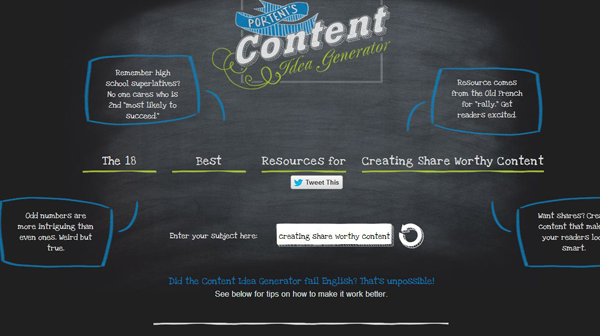
Other tools to consider: InboundWriter
4. Make It Consumable
Collectively, our attention spans are getting shorter, which isn't the best news for content producers. This is why many writers have adopted bulleted or numbered lists to present their copy. Another very popular method is the almighty infographic, which is a visual display of data. Not only do infographics make great website content, but they are also highly shareable on social media networks. Using Infogr.am the following visual was created (free and in about three minutes - obviously it could look better with a little bit more time invested):
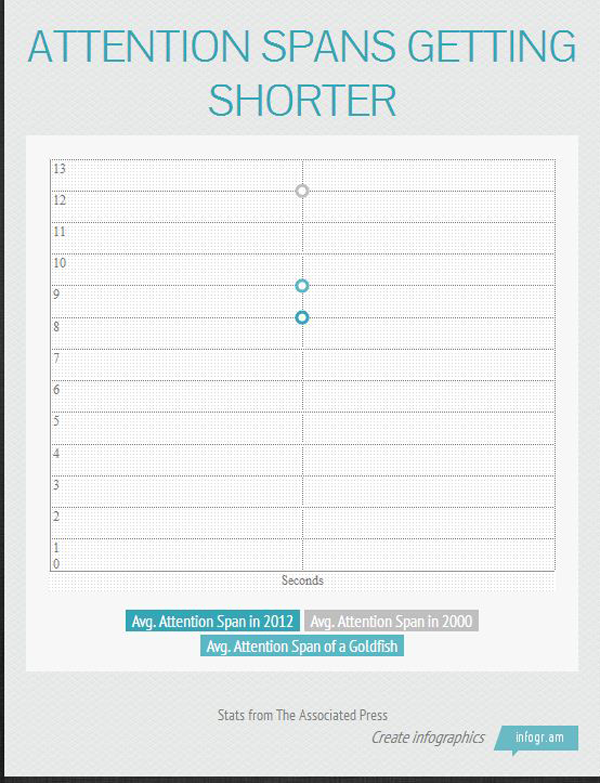
Other tools to consider: Piktochart, Visual.ly
5. Identify a Problem and Provide Solutions
Creating share-worthy content requires one to have their virtual finger on the pulse of their market, but that's easier said than done. It's amazing, however, what real-world conversations or experiences can do to enlighten someone on the pain points of their colleagues, consumers or competitors.
By going to networking events, conferences or even touring a facility, one can learn a lot about what is working and what isn't in an industry and then they can, of course, tailor content to identify a problem and then provide solutions. There are also Web-based tools to keep industry awareness high. Topsy can help marketers analyze the social Web and get alerted of negative Tweets. For example, Coca Cola could use this negative sentiment (seen in the screenshot below): "You would have to walk for 2 hours non stop to burn off the calories in one can of Coca Cola" to create a blog post that identifies the problem (high caloric count) and provides solutions (e.g. an infographic titled "11 Easy Ways to Burn 184 Calories" or spotlight one of its low-calorie drinks, etc.). It's a good practice to introduce the problem before providing the solutions.
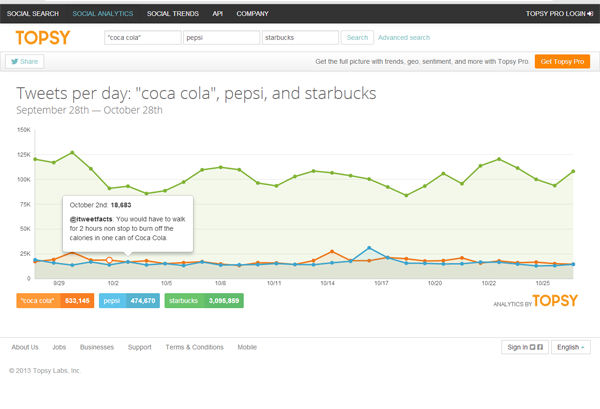
Other tools to consider: Klout, WildFire, Google Alerts
6. Include Social Sharing
Creating share-worthy content is nothing if people can't share it. More than 14 million sites use AddThis social plugs and analytics (screenshot below). The company can even boost sharing by automatically showing the right buttons to each user based on their location and activity across the social Web.
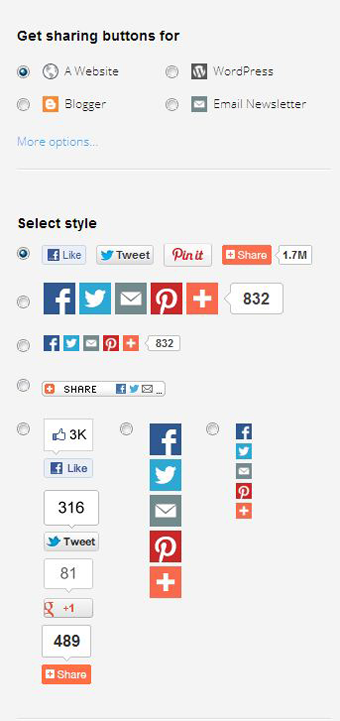
Other tools to consider: ShareThis, Cunjo
7. Use Humor
This can be a bit tricky, but using Topsy we saw a funny Tweet (see image), which has been the subject of many creative blog posts by companies who aren't even in the coffee business.
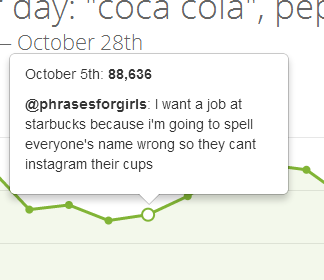
Humor, however, is so subjective that at least two sets of eyes should review the material, to make sure it's not offensive or confusing. GoAnimate is a tool that helps brands be a little more light-hearted with professional animated videos - ranging from $39-$79/month. Its libraries are filled with styles, settings, props and actions - even lip-sync is automated.
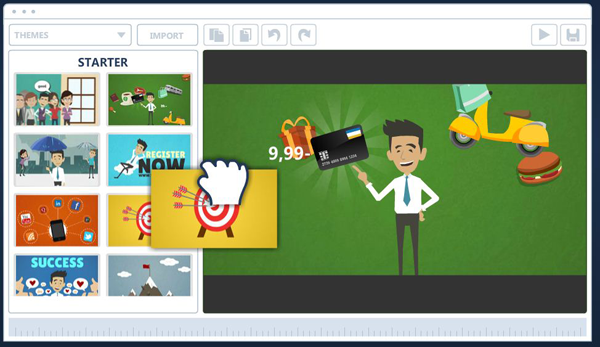
Other tools to consider: Meme Creator, PowToon
8. Track and Measure
These days, it's not enough just to produce content, but companies also need to track the success of its efforts, which can actually help create future share-worthy content. For example, using Google Analytics (GA), a company can see what material is resonating with their readers the most and mimic it another time or start a series of articles based on that topic or theme. More specifically, the Behavior section of GA is designed to help one improve the content on his or her site to meet the needs and expectations of visitors. Additionally, The Site Content > Pages report shows how frequently each page on a site was viewed.
Other tools to consider: Simply Measured
9. (Bonus) Be Personal
Readers access content from different places (from social, ads, search, etc.) and on different devices (like mobile, desktop or tablet) and personalization can help marketers speak to each one of them individually. HubSpot has "Smart Content" and personalization built in, so its users can show the most relevant message to each visitor. Having a website, literally, speak to a user is pretty share worthy and could improve time on site (which we know the search engines love).
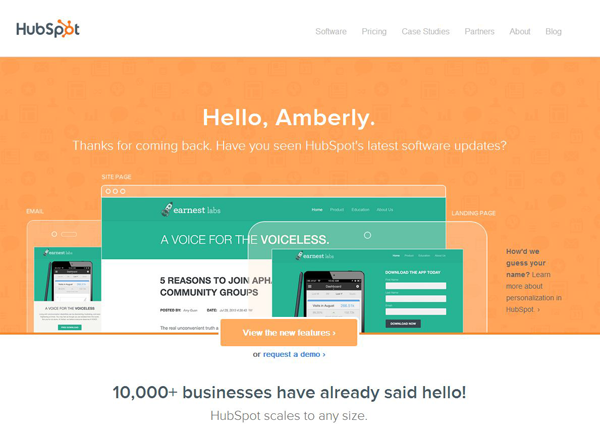
Other tools to consider: Janrain, RichRelevance, Certona, Oracle











